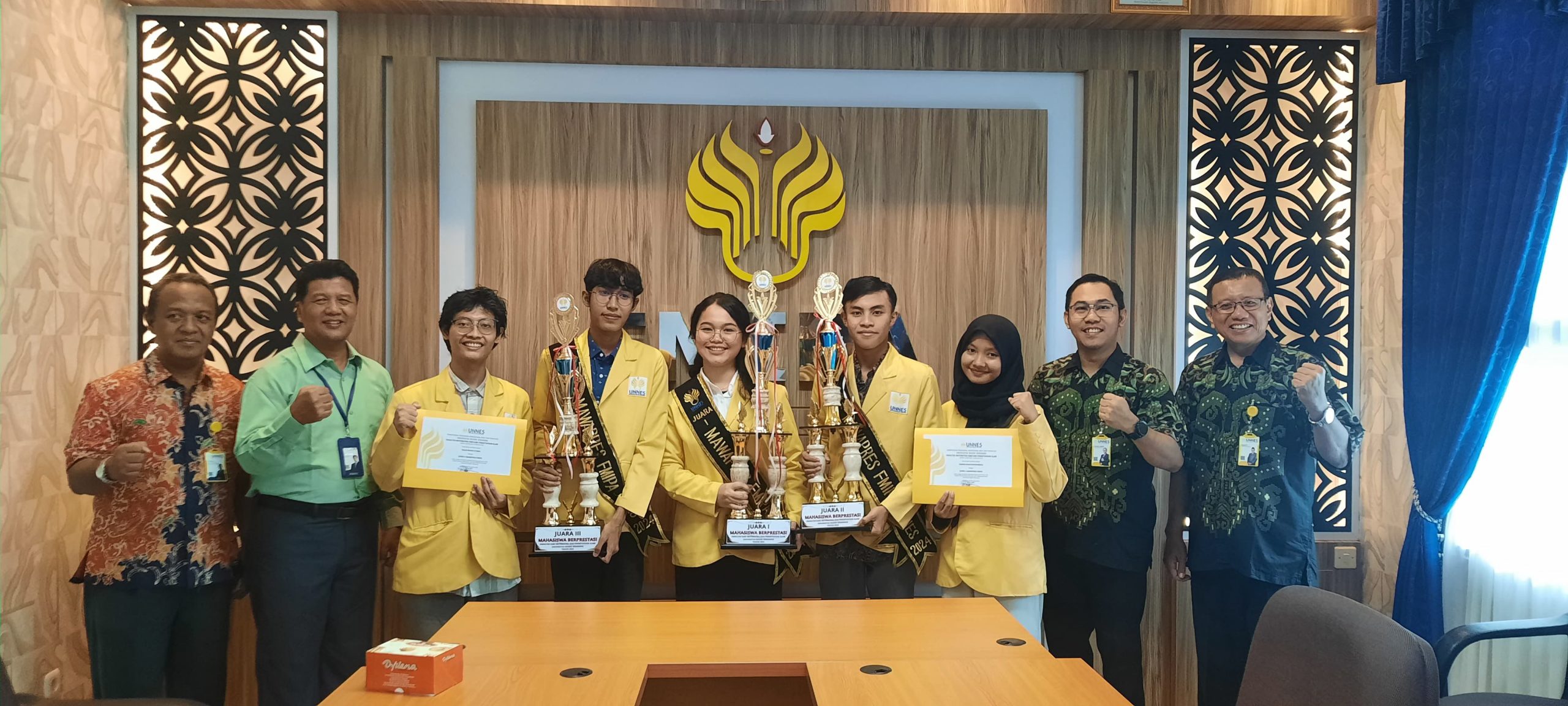
Dr. Edy Wibowo, S.Si., M.Sc. is an alumnus of Physics at UNNES (Semarang State University), class of 2004. He is currently a lecturer for the undergraduate program of Engineering Physics at Telkom University, Bandung. His research field is Material Functionalization. Email: edywibowo[@]telkomuniversity.ac.id.
Zeolite is a structured material of hydrated aluminum silicate with a high specific surface area, making it highly potential for use as an adsorbent material [1-3]. Heulandite, Clinoptilolite, and Mordenite are the most abundant natural zeolite types [4]. Heulandite and Clinoptilolite have similar crystal structures, which are monoclinic, but they differ in their Si/Al ratio. Heulandite has a Si/Al ratio <4.0, while Clinoptilolite has a Si/Al ratio ranging from 4.0 to 5.2 [1,4]. In contrast to Heulandite and Clinoptilolite, Mordenite has an orthorhombic structure with a Si/Al ratio of 4.5-5.5 [5,6]. Each type of zeolite has unique characteristics, including differences in adsorption capacity, ion exchange ability, thermal resistance, and mechanical strength. As a result, each type of zeolite has different potential applications. To further utilize zeolite, its adsorption capacity needs to be enhanced since the natural zeolite’s adsorption ability is relatively low. The improvement of zeolite’s adsorption capacity can be achieved through modification or activation processes.
It has been reported that each type of zeolite requires a different activation treatment. Improper activation processes can damage the zeolite framework, resulting in a decrease in its adsorption capacity [7,8]. Therefore, it is crucial for zeolite researchers to determine the appropriate activation process for a specific type of zeolite. Thermal-based activation, chemical-based activation, and surfactant-based activation are common methods that have been widely used and reported to effectively enhance zeolite’s adsorption capacity [3-10]. Through proper activation, the adsorption capacity of zeolite can be optimally increased. Conversely, selecting an inappropriate activation method may potentially damage the pore structure of zeolite and reduce its adsorptive properties.
To determine the suitable activation method for a particular type of natural zeolite, it is necessary to first understand the type and characteristics of the natural zeolite. Therefore, zeolite characterization should be conducted to obtain adequate information regarding the characteristics of the natural zeolite, enabling the appropriate selection of activation or modification methods for that zeolite.
Sukabumi, West Java, is one of the regions in Indonesia known for its natural zeolite deposits. In Indonesia, zeolite is commonly used as a filter media for water purification. Numerous references have reported that activated zeolite can be effectively used for water purification, industrial wastewater treatment, radioactive waste treatment, household wastewater treatment, and desalination of seawater [1-22]. In order to utilize Sukabumi’s natural zeolite more widely and effectively, the adsorptive capacity of the zeolite needs to be enhanced through appropriate activation processes. Therefore, prior to the activation process, several tests need to be conducted to determine the type and characteristics of Sukabumi’s zeolite. Identifying the type and characteristics of the zeolite is an important step that allows researchers to determine the most suitable activation method to enhance the adsorption capacity of the natural zeolite.
Information about the zeolite structure can be obtained through XRD (X-ray Diffraction Spectroscopy) testing. Chemical composition and Si/Al ratio information can be obtained through EDX (Energy Dispersive X-ray Spectroscopy) testing. Morphology and surface roughness information of the zeolite can be obtained through SEM (Scanning Electron Microscopy) testing. The specific surface area of the zeolite is determined through N2 Physisorption testing using the BET (Brunauer-Emmet-Teller) method, and information regarding the molecular vibration characteristics of the zeolite is obtained through FTIR (Fourier Transform Infra-Red) testing.
Based on the results of structural characterization, chemical composition, vibrational absorption characteristics, and Si/Al ratio, it is determined that the natural zeolite from Sukabumi is of the Clinoptilolite type with a high degree of crystallinity, as indicated by the low FWHM value and small lattice strain. Sukabumi’s natural zeolite has good mechanical strength and thermal resistance, demonstrated by its relatively high silica content and a Si/Al ratio of ≥4.0. Based on these characteristics, the adsorption capacity of Sukabumi’s natural zeolite can be enhanced through thermal treatment. Thermal treatment is an environmentally friendly activation method as it does not involve the use of chemical substances. Further information regarding the identification of Sukabumi’s natural zeolite can be found in the author’s publication in Mater. Res. Express (2017) 4 064002.
References
[1] Mansouri N, Rikhtegar N, Panahi HA, Atabi F, Shahraki BK 2013 Environ. Protec. Eng. 39 139
[2] Yilmaz B, Ucar A, Oteyaka B, Uz V 2007 Build. and Environ. 42 3808
[3] Wibowo E, Rokhmat M, Sutisna, Murniati R, Khairurrijal, Abdullah M 2015 Adv. Mater. Res. 1112 154
[4] Elaiopoulos K, Perraki Th, Grigoropoulou E 2008 Micropor. Mesopor. Mater. 112 441
[5] Korkuna O, Leboda R, Skubiszewska-Zieba J, Vrublevs’ka T, Gun’ko VM, Ryczkowski J 2006 Micropor. Mesopor. Mater. 87 143
[6] Polat E, Karaca M, Demir H, Onus AN 2004 J. of Fruit and Ornamental Plant Res. 12 183
[7] Wibowo E, Sutisna, Rokhmat M, Khairurrijal, Abdullah M 2016 Powder Technol. 301 911
[8] Wibowo E, Sutisna, Rokhmat M, Murniati R, Khairurrijal, Abdullah 2017 Procedia Engineering 170, 8
[9] Hou J, Yuan J, Shang R 2012 Powder Technol. 226 222
[10] Zhang X, Tang D, Jiang G 2013 Adv. Powder Technol. 24 689
[11] Ma Y, Yan C, Alshameri A, Qiu X, Zhou C, Li D 2014 Adv. Powder Technol. 25 495
[12] Su S, Ma H, Chun X 2016 Adv. Powder Technol. 27 139
[13] Ates A 2014 Powder Technol. 264 86
[14] Pawar RR, Lalhmunsiama, Bajaj HC, and Lee S-M 2016 J. Ind. Eng. Chem. 34 213
[15] Ates A, Akgul G 2016 Powder Technol. 287 285
[16] Che C, Glotch TD, Bish DL, Michalski JR, Xu W 2011 J. Geophys. Res. 116 E05007
[17] Shukla PR, Wang S, Ang HM, Tadé MO 2009 Adv. Powder Technol. 20 245
[18] Christidis GE, Moraetis D, Keheyan E, Akhalbedashvili L, Kekelidze N, Gevarkyan R, Yeritsyan H, Sargsyan H 2003 Applied Clay Sci. 24 79
[19] Wibowo E, Rokhmat M, Sutisna, Khairurrijal, Abdullah M 2017 Desalination 409 146
[20] Wibowo E, Rokhmat M, Sutisna, Khairurrijal, Abdullah M 2016 Powder Technol. 301 44
[21] Cejka J, Corma A, Zones S 2010 Zeolite and Catalysis (Synthesis, Reactions and Application





